Want 20 more yards off the tee? This video reveals the surprising truth about driver tee height and how it really impacts your golf swing, distance, and strike.Mark Crossfield teams up with JD Golf Academy for a deep data dive into how tee height affects clubhead speed, angle of attack, delivered loft, body rotation, and much more. Whether you’re teeing it high or low, this isn’t about guesswork—this is about facts and practical drills to help you unlock your potential with the driver.
You’ll learn:
* Why higher tee heights can genuinely boost speed and distance
* How to use tee height to control shape, strike, and shot planning
* What separates skilled golfers from higher-handicap players in adapting to tee height
* Drills to control dynamic loft and improve launch
* The critical link between swing movement and tee setup
Whether you’re trying to hit up on the ball, manage your launch angle, or just finally gain that extra 20 yards you’ve heard everyone talk about—this video has everything you need.
Are you teeing it high, medium, or low? Let us know in the comments and see how your setup stacks up!
Like | Subscribe | Share – Let’s improve your driver together!
—–
SAVE MONEY and support the channel by using my affiliate links.
I’ve partnered with top companies to offer discounts on launch monitors, training aids, range finders, and more.
Check out all my affiliate deals here:
https://crossfieldgolf.info/Affiliate-Discounts
—–
Sign up for my FREE golf tips newsletter:
https://www.crossfieldgolf.com/
—–
Welcome to the Mark Crossfield Golf channel, your ultimate destination for all things golf! Whether you’re a beginner just learning how to swing a golf club or a seasoned golfer aiming to refine your golf swing, this channel is here to help you master every aspect of your golf swing.
At Mark Crossfield Golf, we know that mastering your golf swing and perfecting your golf grip are fundamental to becoming a better golfer. Our videos dive deep into the essentials of a solid golf swing, teaching you how to swing a golf club with precision and power. From golf swing basics to advanced golf swing drills and techniques, we cover it all. Learn the importance of a proper golf grip.
Our channel offers a wide range of golf lessons tailored to golfers of all skill levels. If you’re new to the game, our beginner golf content will guide you through the fundamentals, including the golf grip, golf stance, and how to execute a consistent golf swing. For more experienced players, we provide advanced golf lessons on topics like ball striking and perfecting your golf swing. Each golf lesson is designed to be practical and actionable, so you can apply what you learn directly on the golf course and start seeing results.
Choosing the right equipment is crucial for any golfer. We provide thorough reviews of the best drivers and best irons to help you make informed decisions. Whether you’re searching for the best drivers for beginners or looking for high-performance golf clubs that can take your game to the next level, our reviews cover all the top options. Learn about the latest golf technology and discover which equipment is best suited for your game style.
Every golfer knows that small adjustments can make a big difference. Our channel offers a wealth of golf swing tips designed to help you improve every part of your golf game. Learn how to hit the driver straight, avoid common mistakes, and develop a strategy for better golf shots. We provide detailed advice on mastering your short game and putting, ensuring you’re equipped with the skills needed to lower your scores.
Understanding the mechanics of your golf swing is key to improvement. Our slow motion golf swing analysis breaks down each part of the swing, helping you identify areas for refinement. By performing slow motion golf swing analysis, you can make precise adjustments that lead to more consistent and powerful golf shots. This in-depth approach to golf instruction is ideal for golfers who want to understand the finer points of their golf swing and improve their overall technique.
At Mark Crossfield Golf, we believe in building a community of passionate golfers. Join us as we explore every aspect of golf, from golf swing basics to golf lessons for advanced players. We encourage you to leave comments, ask questions, and share your experiences. Our community is all about learning, growing, and enjoying the game of golf together. By engaging with our content, you’ll gain access to the best golf tips, golf lessons, golf swing advice and equipment reviews available.
Don’t miss out on the latest videos designed to help you improve your golf swing. By subscribing to our channel, you’ll receive regular updates on new golf tips, golf lessons, golf swing drills, and equipment reviews.
Today I’m going to show you why tea height really
matters and why even though you probably know some of this information from my mega study I’ve done
with the team at JD Golf Academy. You are going to be as surprised as we were when we looked at
the data from everyday golfers changing their tea height. If you have ever wondered why I watched
the videos people say tee it like this te like that for extra 20 yards but it doesn’t work
for you. I have found the answer to why that is happening and I’m going to share it with you
today. Last tip today, the big reveal. Honestly, it shocked us. I think it’s going to shock you.
Remember, if you find the information in today’s video useful, hit that subscribe button, hit the
like button. Really helps. Come on, smash that like button for me. And a question I want to know,
do you te your driver up high, medium, or low? In the comments, let me know. So, the first thing we
looked at in our study with a mixture of different handicaps and abilities is club head speed. Did a
higher T to a medium T to a lower T influence club head speed? And we saw a slight increase in most
cases in club head speed from the higher T to the lower T. You’ll see why this happens as the video
goes on. But interesting to watch how that higher T gave people maybe a little bit more freedom of
movement, bit more space to move to increase that speed, which is why the extra 20 yards is on the
table when it comes to the higher T. To get the most out of that extra speed from the low tee to
the high tee, great place to start is in your lead foot. So on the down swing, you want to feel like
you’re really pushing into that lead foot as early as you can in that down swing because you want
to get that energy out into the ball. Now, to do this, a great little trigger would be to lift
your lead heel on that back swing. I’m not talking straight up in the air, but just a tiny lift of
this heel as you go back will allow you to really feel that pressure in that ball and those toes
of your feet. You want to push that energy this way. So out towards just in front of the ball and
then in turn that ground’s going to push you back, which is where you’re going to get that better
turn and ups to get the better speed out of the high tee to the low te. And then in contrast,
if I hit the low tea here, I’m not going to push as hard. I’m actually going to stay in lead
foot. Stay down for that ball. Play that low tea. That’s going to be shorter. Play a different shape
compared to the high tea. I’m really going to feel on this back swing that I’m really pushing into
this lead foot a lot more. Play that shot. Boom. Oh yes, that is longer. And they were different
shapes as well. Great way to trigger that feel. The next thing we looked at in the study with the
team from JD Golf Academy was angle of attack. So if the club is passing up more to get that ball
on the higher tee when it’s on the lower tee, does it pass down more? And we saw again in most
cases the higher tee encouraged more of an upward angle of attack. It moved the angle of attack
from the lower te to the higher tee. And often for golfers from their standard tea to the higher tee,
you would see a difference in how they attacked the golf ball. hitting more up again opens
that door for that 20 yards with the speed. If you can maximize your angle of attack with other
factors that you’ll get to and learn through this video as it goes on, you’re going to maximize
your driving distance. But again, like speed, not everybody changed their angle of attack. Two
great useful tips for trying to get that angle of attack working for you from the higher T. Number
one, I want you to connect your hands and the grip end to your trail pocket. And what I mean by this
is I want you to feel like you get your hands in a down swing, basically down level with your trail
pocket. Then from here, feel like your hands are going up and left. So from here, they feel like
they’re going up and left around you. One of the big faults we see is golfers hanging on to this
angle, trying to really think is the answer. That keeps the club up in the air, gets the hands low.
When the hands get low, they need to start coming up and there isn’t enough time to get the club to
the ground before it hits the ball. So, it hits on the way down. Where if you are quicker in getting
that club down to the ground for more near trail pocket from here, you can literally just extend
your body and turn through because believe it or not, on the down swing and into impact, even when
you think you see shaft lean, your hands connected to this trail pocket as it comes through. It’s
not going across your body like it looks from a 2D camera. Now, if that doesn’t do enough, grab a
head cover and just push that feeling on a little bit more. Put it two size n feet in front of
you. People often put this head cover too close. Doesn’t need to be massively in the air and get
the feeling of connecting hands to trail pocket. Connecting with that ball and then moving above
that head cover on the way through. If you’re someone who does want to leave that club up in the
air and you feel like you have to tee it low to get it, you’re going to come through and you are
going to connect very close with that head cover. Me personally, when I do this with students, it’s
the practice swing next to the ball, missing the head cover, connect the trail um pocket, extend
up and get that head cover missed on the way through. Then I ask them to move it because we
want a real swing happening when the ball’s there and applying that feeling. We see different
changes in angle of attack. Better distance, better strikes. Oh, lovely drives like that.
get on delivered loft. So the loft at delivery, we saw more loft with the higher T and less
loft with the lower T, which we would expect. But what really showed through when we talk to
the different abilities of players who did the test is how this can be really used as a skill. So
the tea height, then in turn, how it changes the loft you deliver when out on the golf course in
different situations. ball on the left, low tea, compared to the high tee. This is a very tight
golf hole that shapes round to the left. Low tee is slightly shorter. So on this tighter hole, I
don’t want to go too much round the corner. I’m going to aim up the left and play the shape that
the low tea dictates. A little cut into the middle right and little bit leaked, but it won’t be long
enough to reach the trees. The high tea here, I’m feeling like I might try and bomb it. It’s
giving me that extra speed. It’s changing my angle of attack. Changes to path. Changes to the
way golfers are swinging the club. Going to hit this one harder. Try and boss this hole. Take it
right up there left side and chase it up. That’s a little wedge in. I’m going to use these heights.
Good players are using different tea heights. You need to start doing it, too. It’s a massive
weapon in your game for good driving. Now, this was a huge surprise for all of us. Not as
big as the end surprise which is coming. But this one really did shock us. We saw an increase
in most cases in body rotation specifically in pelvis. So hip rotation which kind of goes inside
with those other ideas we’ve just spoke about. But that wasn’t on the table. I was not expecting
that to be something that would change. But again, we really did see in most cases and you’ll
see why that statement is so important as we get to the last tip which is it just blew us
away. but being more active with your body in the down swing and through into impact. You could
really see why the 20 yards again totally on the table. If you can use a higher tee compared
to a lower tee and get everything in place, push that rotation a little bit more. really
simple tip you can use to help you make sure that you are getting what we see from those players
from that high te where they want to open up is obviously helping them get up and through the ball
is try and get your shirt buttons to chase the ball literally chase the ball. So back swing I’m
going to turn and my shirt buttons go back here. I’m going to bring them down. I’m going to try and
time shirt buttons up to around impact. Obviously, the ball’s going to come off super fast, and I’m
going to try and chase that ball with my shirt buttons. It gives you a great feeling of rotation
on the way through, making sure that you get not too much too early, which is common because you’re
trying to line shirt buttons up with impact. It’s the chase afterwards, which you’ll actually start
doing from about here, which is what we want. So, it’s this kind of delay in turn to then really
trying to turn to chase that ball with your shirts. Because we see this from so many good
players. The classic position is where we get this one on the way through where you’re almost
kind of pulling the grip off this way. So as the club is flying out, your body and your hands and
arms are pulling back on the club basically to get controls. It comes around the corner. And
if you think about that, that is basically your shirt buttons and the button of the club all
marrying up. Really feel that you turn shirt buttons to the ball. And then as you’re coming
into here, really give that forward chase with your shirt buttons and your chest. It’s going to
just push those rotations on a little bit more for those of you out there not increasing that
rotation enough. Another big change we’ve seen, which we’ve kind of already mentioned already,
but we’re going to call this loft difference. So, this is the difference between loft delivered
compared to loft at the beginning. to where they started. And what we really noticed is an increase
between 5 and 10° in loft difference from where they set up to where they deliver. Again, really
making us see that they couldn’t really did kind of change the ideas of angle of attack and loft
and how they really need to be separate forts, which hopefully this tip will help you see. For
those of you who are maybe adding when you hit the higher ty too much loft because of the increase
in loft which is then shortening you. So you go for higher tee and you think well it doesn’t go
longer for me it goes shorter. You’re probably not that good at controlling dynamic loft while
the club is coming up more to hit that ball which means you need to be able to separate angle
of attack. So club coming up coming down and the loft. They’re separate movements. Easiest
drill to feel that I want you to move into last parallel on the way down. So feel like you’ve just
shifted across. Bring your hands down by trail uh pocket. And what I want you to do is just move
into this position. Turn the face to the ground. So I’m just turning my wrist, turning the club
down to the ground. And then just try and hit it from there off your higher tea. What we’re going
to see angle of attack is four up. Launch angle was six. It actually didn’t get dynamic loft
there cuz I turned so much off. Now doing this, remember from the high te, you’ll still got that
angle of attack improvement. Same idea. Moving to last parallel. I’ll just turn the face up to the
sky and turn through. You can see high rights, very common shot. Dynamic loft is 17. Angle of
attack is up, launch at 15°. So, you can control loft by trying to achieve last parallel, taking
loft off or adding loft while still trying to hit from that high te. And the more you get into
the habit of hitting from adding loads of loft, turning face to the sky, taking loads off, finding
somewhere in between, the better you’re going to get a disassociating loft with angle of attack.
So when you do get your higher TE’s, you got your better chance hitting those bombs you want to hit.
And often the big question with this, yes, but where’s right? There is no right. You’re all going
to hit a different position in last parallel. Some of you are going to require more turn down subject
to club path. Some of you are going to create less turn down subject to club pass where the club
is coming from. It has to blend into everything which is why you need to learn the skill of using
all those angles comfortably controlling all of them to find that middle ground. That’s where the
real skill lays. Remember to like and subscribe if you’re not already. Subscribe to the channel for
free videos. Like the video if you can. It really helps the channel out. Now the big reveal. This
one was so noticeable. The players in the test with the higher club head speeds naturally made
more of the changes I’ve just said above. They got these things into place just by changing tea
height. Not telling them anything, not asking them to do anything. Literally just changing the tea
height. They rotated more. They hit up on it more. They increased the speed more. They reacted more
to the tea height. the lower speeded players which in turn were also the higher handicap players
they didn’t always adjust. If they adjusted one or two of the things they never adjusted all of
them which is the reason why when you watch to higher hit it further videos you try that and it
doesn’t help. You have to be doing all those tips prior on in the video if you’re someone who is
not changing to tea height which we noticeably saw from different abilities of golfers. We can relate
that to club head speed, but that really related to their indexes, their handicaps as well. And
that’s something we see on AROS data where slower golfers generally have higher handicaps and faster
golfers generally have lower handicaps. And I know there’s outliers in those as well, but the lesser
skilled golfer, however we want to define it, was not as able to adapt to the ball on different
heights. Think about what that means when you’re out there playing on the grass as well with your
iron play. If you are not adapting to different heights with the driver and your safety zone,
when the ball’s off the ground, how good are you adapting on different lies? And when the ball’s
above your feet, below your feet, down your lies, all those kind of things. Again, you’re probably
going to see in those cases, more skilled golfers handle it, less skilled golfers don’t. Meaning,
if you want to get the benefits of this video, you need to practice all those tips that have
gone before to make sure you get those benefits of the high tea to the low te. 20 yards is on
the table. It totally is. But it’s not just the tea. Everything else has to fall in place. Now, if
you want to find out how far you should be hitting your driver to your ability and your age, this
video here will tell you everything you need to

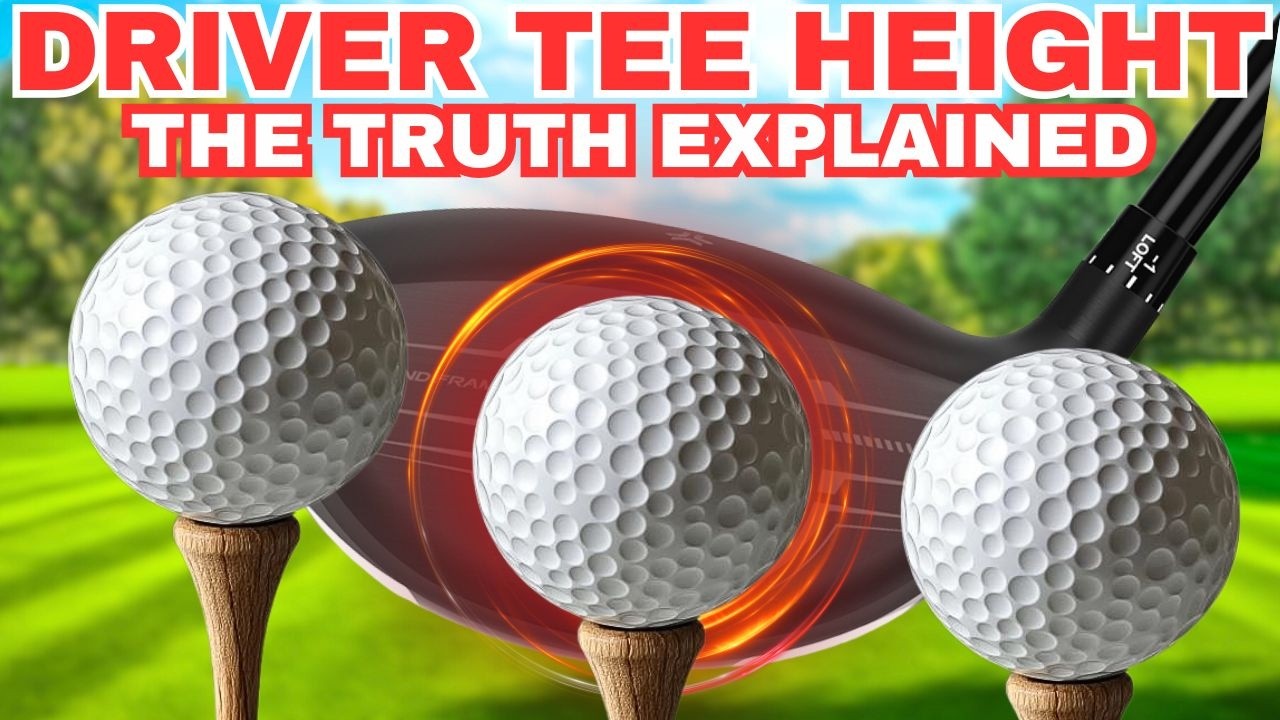
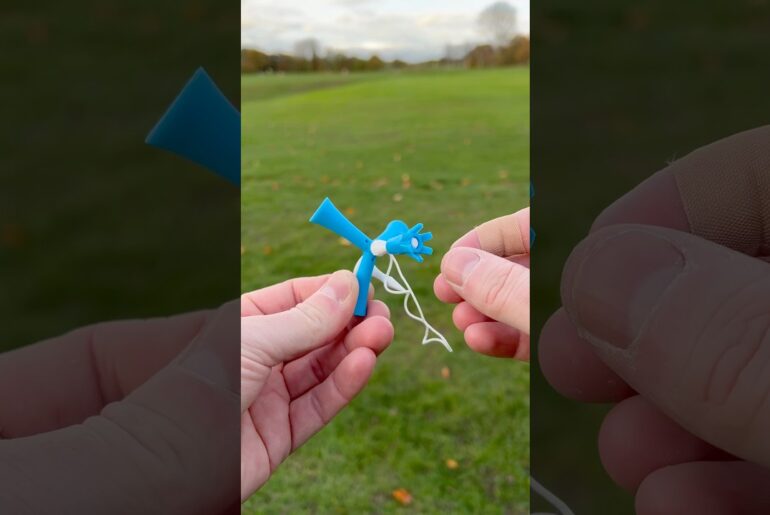
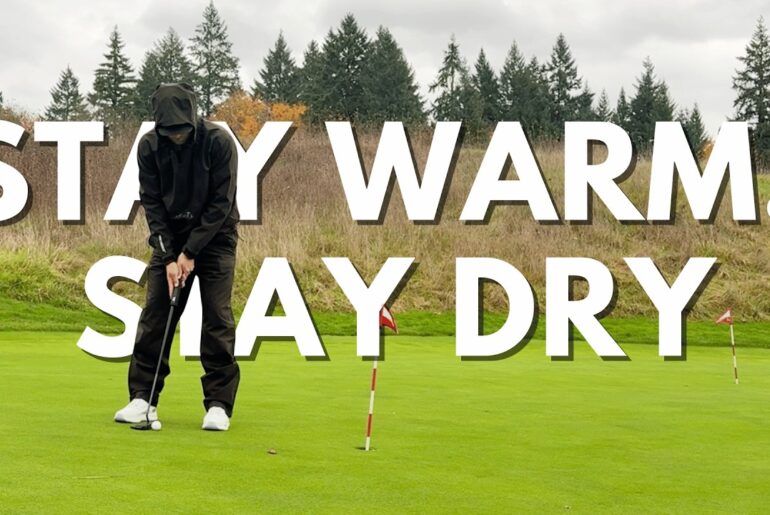


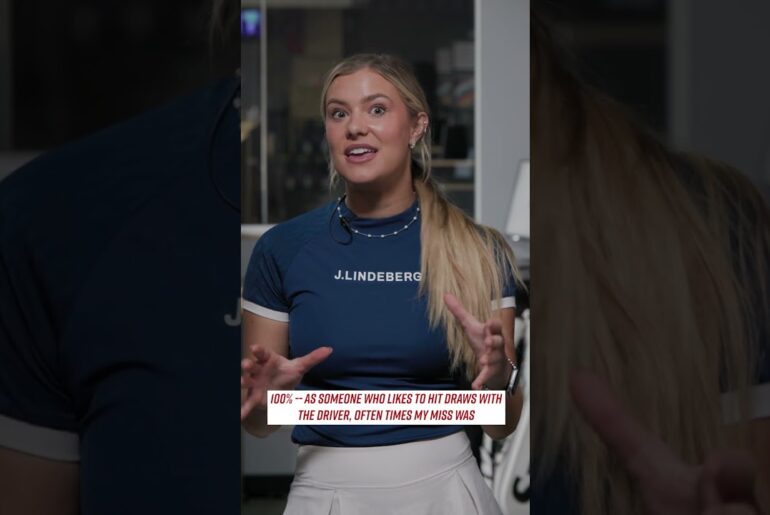
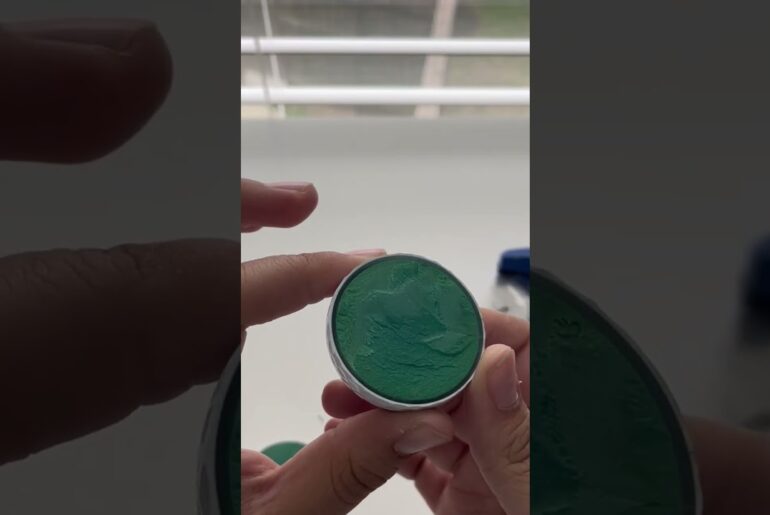
37 Comments
Medium
I use the pink plastic tees which I would call medium hight. When I use shorter tees I tend to slice more and when I use a longer tees and hit up I spray it all over the course 😂
I have a 95 mph swing , I used to tee high. But I now I guess use the pink tee height maybe slightly lower ( 3 mm )
Hitting it cleaner and better 280yrds total
Not bad for me ( 60yrs ) Thursday
This video is 30 minutes old, and most of the comments appear to be from attractive strippers. I guess I need to take up golf!
Very interesting and may I say important information Sir. Cheers from the Mississippi Gulf Coast! Let’s see what happens at my afternoon tee time later today.
So what height was the tee before and what height was it changed to. Are we talking white to pink
It started with contradiction at first you say "increase.. from the higher tee to lower tee" then say the opposite just after
Cheers Mark your videos are always helpful I have followed you since you Cliffton Hills days keep up the good work
So Mark, the less skilled golfer shows less skill? 😂
Mark – I've heard that pros are actually hitting down with their drivers. Is that because their swing speeds are that much faster?
Late 40s
16 handicap.
Pink castle tee.
Driver carry 220m
No idea what my club head speed is.
How high do you tee up your driver?
My problem is I, if tee the ball higher , my swing stays the same ( lower to the ground ) I will put an idiot mark on my driver , so teeing the ball higher and adding 10-20+ more yards with possibilities of sky marks all over my $1000 fitted PXG driver isnt going to happen …LOL
High
I tend to tee my ball fairly high. It was suggested on my last round on Saturday that I tee it down a bit. I will be working on that at the rage this week to see what happens. I do use tees with lines on them to try and have a consistent tee height, so I will be dropping mine maybe 1/4" (one line width). It would still be a bit higher than normal
Medium i think. I have lowered it in recent years.
Medium
So I'm a 12 HCP and I'm 44 and I hit my drives about 260-270.
Unfortunately my iron game is a solid 60/40.
How high is a high tee ?
I tee my driver according to flight needed. Higher goes higher longer and lower spin draw. Mid goes almost a midflight which goes stock is more accurate and has a slight draw. Low is a stinger!
High handicap high tees !
Medium
I'm experimenting alot with tee height. I found a low tee sqeezer that i can aim down the left and fade back. Suits my tendancies and really helps on certain holes. I can hit a draw when i get it together. Need to get my wrists turned down at parrallel. Get a bit cuppy under the gun sometimes. Great video again.
I have been playing with tee heights recently, first couple of drives of the day tend to be on the low tees with a slower swing speed, try and find the fairway, then I will go to pink castles unless the winds on my back, I will then use an orange tee slightly tilted back….becoming way more consistent as Im not just gripping and ripping it. Course management is improving so my scores are generally coming down
Been trying to go back to the driver. Been using a 3 wood off the tee since my junior days. 😅 So tweeking back to it is still a challenge. 😅
Fascinating. I used to play higher, but been kinda medium lately. I live on Whidbey Island, and—I think—the medium height plays in wind well. I will go higher if I am driving well, and it’s a fairway that I feel confident for blasting a high ball.
G’Day Mark, thanks for the shout out @0.14 seconds…All Good Bruh.
Medium low.
Why does the AI player show a bent lead arm at impact. That's not correct, is it?
Very informative video. I use what I consider a mid-to-low tee height but will try a higher tee height to see the difference.
One question…how are you defining high and low tee heights? Does the high tee have more than half of the golf ball above the top of the driver or is there some other metric I can use. And how does the ball sit relative to the top of the driver in the low tee height?
Would appreciate any guidance you can provide.
I have a low swing speed so always tee my driver and woods higher to try and gain more elevation on my shots.
I'm a medium rare kind of guy
My flight pattern I medium-low as a 74yo carrying around 220-230 and depending on 20-30 yards of roll.
I have been teeing lower to kill my slice. It seems like every time I tee up higher it exacerbates my slice. I recognize that this is a symptom of me not closing my face, and also having an in-to-out club path. Back to the practice tee!
What is the attack angle
Tee it low and let it go!
I might’ve missed it in ur piece, but what degree of loft should the drive be when setting up a high tee or does it not matter? Example I use a 9 degree loft driver.